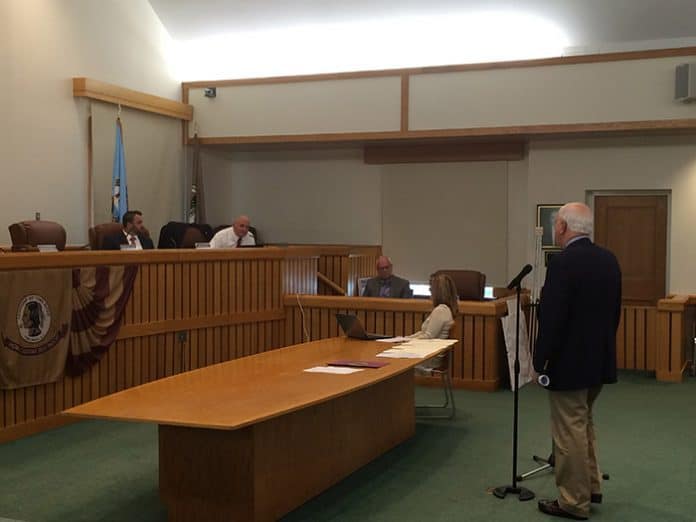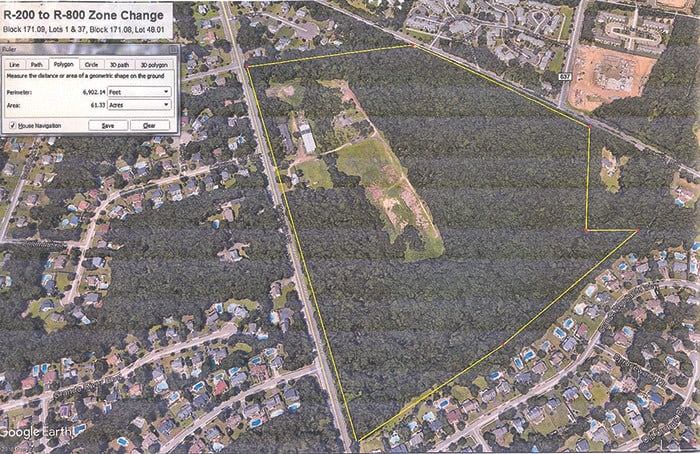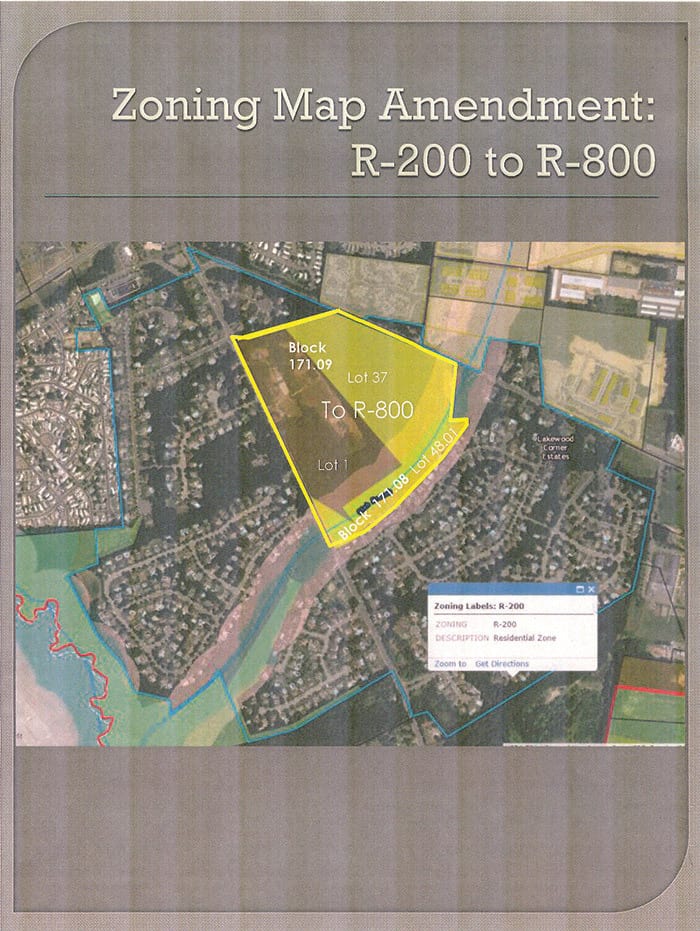
TOMS RIVER – A section of the northern part of the township was rezoned to limit development, but it was not without a legal challenge and a claim of anti-Semitism.
The property is a somewhat triangular wedge between Whitesville Road and Cox Cro Road. The area is currently mostly wooded.
Local attorney Harvey York filed a notice of protest against the change. He represents two of the three property owners that are there, Hecht and Lipschitz.
The land is currently zoned R-200, which would allow dense housing. It equals one unit per 20,000 square feet. It was changed at the most recent Township Council meeting to R-800, which means one unit per 80,000 square feet of land.
If it had remained at the denser zoning, there could have been 100 units on the property. The change reduced that to 25, York said. Naturally, this would make the property much less valuable to the property owners. An appraiser valued each parcel at $5 million, if able to have 100 homes on it.

“If you want to preserve open space, you buy the land. You can’t take away the constitutional right to develop the land,” he said.
He argued that much of the neighboring land is of higher density housing, and that the parcels should remain so. The township, he said, has not been consistent in its rezoning.
Jesse Goldstein, a real estate broker, said that this is exclusionary zoning, accusing the council of not wanting Orthodox Jews from Lakewood to buy these properties.
“It’s not right. It’s not legal. It’s Toms River Strong all over again,” he said.
Councilman Maurice Hill, who has been on the Planning Board in the past, stated that a lot of the major developments neighboring the property were approved more than a decade ago.
He also stated that the township has never made motions to prevent any group from moving into town. This rezoning was about the number of houses, not who might buy them.
Because York had challenged the ordinance, it needed to be passed by five members of the council, instead of a simple majority. The council unanimously passed it. (Councilman George Wittmann Jr. was absent.)
York further argued that his challenge means, by statute, that each person voting for it would need to state, on the record, why they voted “yes” or “no.”

The township’s attorney, Kenneth Fitzsimmons, disagreed with him and they debated the minutiae of state law. Their discussion began in the meeting, but then the two attorneys continued their conversation in a private room. When they came back, Fitzsimmons said they have a difference of opinion as to which statute should be followed.
York’s point was that the rezoning was not part of the master plan, a large document that sets out what every parcel in town is zoned in order for officials to guide development.
Township planner David Roberts said that the rezoning is consistent with the master plan, even though it is not in the plan itself. The master plan worked to move development downtown, and away from the northern portion of the town. The roadways in the northern area are congested as it is, and with no plans to widen Route 9, it would be bad to keep adding homes to the area.
Since the rezoning was consistent with the master plan, Fitzsimmons opined that the council members did not have to go on record about why they were voting the way they did.
However, a press release from the local Republican party laid out their points of view anyway. The release stated that the ordinance would “tackle the problem of over-development due to a sharp increase in the construction of high density housing in the North Dover section of the township.” Also, it was better than a plan to eliminate all multi-family housing, which would open the town up to lawsuits, and the history of such suits shows that the developers often win.
It quoted the Republican members of the council, and the mayor, about how the ordinance would reduce the number of homes. It also noted that the plan was bipartisan, since Democrat Laurie Huryk, a council representative on the Planning Board, was part of this plan.
The release also stated that any development in that area would require 50 percent of the land be set aside for open space.






